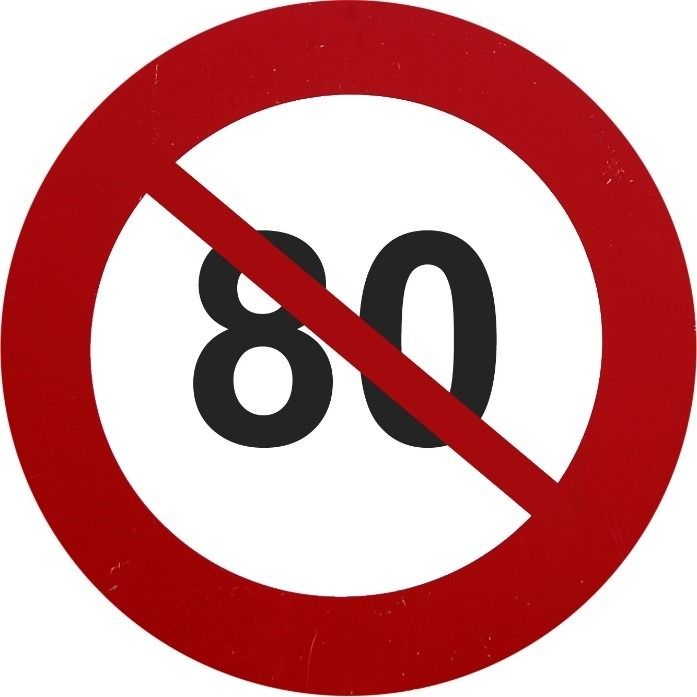Imagine Breaking 80 Consistently

Introduction
Congratulations, if you’re searching for tips on “How to Break 80,” you’re probably scoring in the mid to low 80’s consistently. That alone places you in rare company, but it’s time to get into the 70’s, and I’m going to help you do just that.
Let’s start with a simple realization:
- 79 = 11 pars + 7 bogeys
That’s it. You don’t need to set the world on fire, you just need to scrape it around and keep the big numbers off the card. To do that, you DO NOT need a new swing, you just need to upgrade your practice and improve your mental game.
Daniel’s Two Commandments
- When trying to break 100, my Two Commandments are a suggestion. When trying to break 90, they’re a strong suggestion. When you’re trying to get into the 70’s, they’re almost mandatory.
- Keep the ball in play and don’t three putt.
Upgrade Your Practice
Upgrading your practice doesn’t mean buying a bunch of new training aids, nor does it mean putting in more hours, it means getting more out of your hours. To do that, you need to approach your practice sessions with a clear plan of what you need to accomplish.
Know Your Distances and Your Percentages
As someone scoring in the 80’s, you probably have some idea of your yardages and percentages. Get a better one. You should know your average/comfortable yardage for each club as well as your maximum yardage. Of equal importance are your percentages: how often do you hit each club perfectly? How often are you successful in hitting your chosen shot shape or trajectory? This is the information you need to form a good game plan.
The 80% Rule
Once you know your percentages, you can put the 80% Rule into effect. Simply put: if you can’t execute a certain shot 80% of the time in practice, you should not attempt it on the course. That could mean that you don’t try to hit a high draw with your 4-iron, or it could mean the 4 iron comes out of your bag altogether.
Tee Shot Competence
In my plan for “How to Break 90”, I advocated leaving your driver, 3W, hybrid, and long irons at home. Unless you’re Bubba-long, that won’t work for breaking 80. That said, you don’t need to hit driver to break 80: you can easily do it with a fairway wood or hybrid depending on your length and the course you’re playing.
The key to breaking 80 is hitting it far enough while keeping it in play. Again, “far enough” is relative to the course you’re playing, but “keeping it in play” should be easy enough to understand.
Ultimately, you need a club that will put you in a position to go for the green most of the time without ever getting you into trouble. If that’s your driver, great. If that’s your 3W, fine. Find a tee shot club that you can rely on, and stick with it.
Develop a “Go To” Shot
In both your long game and your short game, you need a “go to” shot, a shot you can execute even under the crippling pressure of needing to make par on #18 for a 79.
Your “go to” shot should be very specific, for example, a high, left-to-right, 163 yard 7-iron. That level of specificity makes it a real “go to” shot. Saying that your 7-iron is your “go to” shot isn’t going to cut it because you will find yourself questioning how you will shape the ball and how far it will go.
With your short game shot, you want to know the club, the mechanics, and the expected trajectory of the shot. When I say “know the mechanics,” I simply mean that you should be able to verbalize what the shot feels like so that you can recreate it under pressure. For me, that would mean, “60° wedge, ball centered, quiet hands, left shoulder drives the club back and through.” That produces a shot I can hit up to 60 yards on a low trajectory with moderate roll out. It may not be the perfect shot for every situation, but I know I can execute it under any circumstance.
Better Putting Practice
We all like seeing the ball go in the hole and pouring in dozens of 4-footers is great for your confidence, but it does not replicate the challenges you will face on the course. The first step to better putting practice is to use one ball instead of multiple balls. This replicates on-course putting and forces you to focus more. Now, with one ball, do 18 holes worth of putting: drop the ball some distance from the hole, putt until you make it, repeat 17 times. Mix up the starting distances: give yourself some 10-15 foot birdie opportunities and some 40-50 foot putts as well.
Mental Skills
Why is a caddy so valuable? Because he does the thinking for you, free of ego or other concerns. Unfortunately, most of us don’t get to play with a caddy or a coach, so we have to do the thinking for ourselves. On the bright side, this becomes a built-in advantage for those of us who develop our mental skills since 99% of golfers don’t.
Know Your Game
I already mentioned knowing your distances and percentages. That’s a great start, but it’s the bare minimum of knowing your game.
What shots do you like hitting the most? What shots do you fear? What situations make you feel confident? When do you feel nervous or tense on the course? What are the things that have kept you from breaking 80 in the past?
All these questions should be answered literally, but also probed for deeper insights. For instance, I used to prefer chipping a 50-footer to putting it. That’s a surface level preference. On deeper examination, I realized that preference wasn’t based on my success with each approach but on the fact that I had lower expectations for my chips. By simply examining that preference, I was able to upgrade my course management and play to the actual percentages as opposed to hurting myself with an irrational decision.
By taking time to reflect and analyze, you can learn all there is to know about your game and put yourself on a path to real improvement. I strongly recommend the Vision 54 books for those who want to explore this in more detail.
Minimize Risk
“Minimax” is an idea that comes from game theory. It refers to a strategy that minimizes the maximum loss, and it can be a very helpful way to think on the golf course. I’m going to use the picture above to illustrate.
On a Par 5, you have hit your second shot to the position shown above. If you play a really good pitch, playing along Line A gives you a much shorter birdie putt than Line B. However, Line A also brings a lot of big numbers into play. If you hit it short, you’re in the water and re-playing the same shot again plus two strokes. Hit it long and you have a dicey sand shot that needs to be perfect, lest it ends up in the water. Along Line B, the huge numbers are virtually impossible: hit it short and you can 2 or 3 putt for par or bogey, hit it long and you can chip it on the green and 2 putt for an easy six.
Of course, every shot entails risk and has some bad possible outcomes, but by focusing on minimizing your maximum score, you can stack the odds in your favor.
Discipline
Do you know why 80 is the toughest “break” in golf? It’s because players at this level have just enough skill that they forget about being disciplined. They’ve pulled off enough miracle shots that they believe they have one more in the bag. Unfortunately, they’re usually wrong, and the result is a big number.
Having the discipline to play for the middle of the green, taking your medicine, punching out, or laying-up is the key to better course management. If you’re going to be swayed by your friends’ taunting or your own ego, you will be chasing this milestone for a long time.
Mental Practice
If you’re still reading, I’ll take that to mean that you agree with me about the importance of mental skills for golf. If we agree that mental skills are important, we should also agree that they’re worth practicing.
Visualization
Visualization is the most powerful mental tool we have. We can actually convince our mind that things have already happened if we imagine them richly enough. You know this to be true: call to mind a strong negative memory and feel your body go through the physical response as if it’s happening again. We all know the power of our imagination, but most of us fail to use it to our benefit. Separate yourself by imagining or remembering positive things about your game: perfectly struck shots, putts falling in the cup, and chips stopping next to the hole. You can even play an entire round of golf in your mind.
Practice Decision Making
The best way to make the tough decisions easier is to make them in advance. This can be part of your visualization practice. Imagine a tough situation: the ball hit a sprinkler head and bounced behind a tree. What are you going to do? In your mind, see that tiny little window that you could try squeezing the ball through, then visualize yourself ignoring that window and making the smart play back onto the fairway. Envision yourself laying up in a situation where going for it carries too much risk. Picture yourself aiming at the center of the green, away from sucker pins.
Routine
Whether you’re playing, practicing, or imagining, routine is key to creating consistency. Use the same pre-shot routine on the course that you use in your practice. See that same routine when you visualize. The routine should include both physical and mental elements: a key phrase is every bit as important as your waggle.
Game Day
When it’s time to get on the course and break 80, you should treat it just like any athlete treats a day of competition. Start with a good night of rest, good nutrition, and then get to the course with plenty of time to warm up.
Warm Up
Most players at this level have a routine that they like to use, whether that means starting on the range or starting at the putting green. Regardless of the order, make sure you do the following things:
Warm up your body with stretching and activity.
Observe your ball flight on the range. This is not the time to make swing changes, simply note your distances, shot shape, and the effect of the wind, temperature, and other factors.
Get a feel for the speed of the greens. This will be critical to both your putting and short game.
Play the Right Tees
I cannot stress this enough: breaking 80 is breaking 80, the yardage does not matter. If moving up a set of tees allows you to hit a more reliable club off the tee, do it. If it will improve your sight lines or angles from the tee or into the green, do it. Break 80 now, worry about doing it from the tips later.
Stick to the Plan
You’ve structured your practice, both physical and mental, around giving yourself the best chances for success. Don’t abandon that now. Ignore the hero shot to shoot the hero score.
In Case of Emergency
You will get in trouble. That’s the reality of golf. It’s virtually impossible to hit 14 fairways and 18 greens. This is OK because you don’t have to do either to shoot 79. Remember the minimax concept and keep in mind that you have 7 bogeys to “spend.” Even a double bogey is a good score if it prevents triple or worse.
One Shot at a Time
Finally, remember that at no point in the round can you shoot 79. All you can ever do is hit the shot in front of you. Give it your full attention.

Hey everyone, Daniel Guest here—Top 100 Coach, #1 Instructor in PA, and founder of Imagen Golf. I've given over 39,000 lessons, and if there's one thing I know, it's that the game is always evolving. We're not just practicing anymore; we're training smarter than ever. The days of just grinding on the range are over. The future of golf instruction is personalized, tech-driven, and focused on your unique blueprint. Let's dive into the three biggest game-changers you need to leverage right now to Unleash the Golfer Within!

NEWTOWN, Pa. - Oct. 12, 2025 -- Newtown and surrounding communities are about to experience golf like never before. The Golf Place, a state-of-the-art indoor golf facility designed for enthusiasts of all skill levels, from those honing their game to those simply seeking a fun, engaging golf experience, today announced its grand opening for Tuesday, October 25, 2025. The Golf Place is poised to become the region's premiere destination for indoor golf instruction, practice, and play. The facility will feature eight cutting-edge Trackman golf simulators, offering hyper-realistic gameplay, detailed swing analysis, and access to the world's most famous courses.

Moving decisively away from subjective "feel-based" advice to a scientific, data-driven approach.Fueled by advancements in technology, the latest trends are democratizing the precise analysis once reserved only for tour professionals, making personalized, high-level coaching accessible to every golfer. Here's a look at the key trends shaping modern golf instruction and practice in 2025:

For years, you've been told to do a bunch of confusing things—like opening the clubface wide open and swiping across the ball—that just don’t work for the average golfer. It’s an old-school approach designed for old-school wedges. But at Imagen Golf, we don’t teach that. We teach the new-school bunker technique that the best players in the world are using every week to make bunker shots look easy. Players like Scottie Scheffler, Jon Rahm, and Collin Morikawa have all ditched the old rules for a simpler, more powerful way to get the ball up and down.

When we hear the word stinger in golf, the first thought that often comes to mind is Tiger Woods and his famous 2 iron stinger he rips down the fairway.This golf shot is super important to have in your skill arsenal. If you don’t carry a 2- or 3-iron, a fairway wood will achieve similar results. The concept behind the shot can also be used for punch approach shots to receptive greens, using any club down to a pitching wedge.On windy days, you can use it to maximize distance by hitting that low flying drive that stays low and runs like crazy upon landing. Meanwhile, your playing partners are watching their drives get hung up in the wind, losing 50 yards off their normal distances. So what's the secret? How do we perfect the stinger like Tiger? To hit the “stinger” you want to produce a low dynamic loft when you strike the golf ball in order to create a low launch and low spin. By default, you're used to hitting with high dynamic loft so it can make the transition a challenge at first but once you master it, you can hit this golf shot on command any time you need. How to Hit with Low Dynamic Loft To produce low dynamic loft, we want to create forward shaft lean at impact which basically means the grip of your club is ahead of the clubface when striking the golf ball. This delofts the face which helps lower the launch angle and back spin rate. In order to create a forward shaft lean at impact you'll need to change a few things during set up. 1. Start by moving the golf ball a little further back in your stance and place a little more weight on your lead side (left side for right handers). This simple adjustment in set up will set your hands forward at address and will help you produce a slight downward hit on the ball. 2. Choke down about an inch on the grip for added control. These adjustments should cause your arms and the shaft to form a “y”. Make a smooth, full backswing, and try to retain this “y” as much as possible throughout the swing. 3. Now the key to creating a low loft and square face at impact is in the lead wrist. The stinger’s low trajectory and extra roll result from the bowed wrist position at impact. To practice getting the bowed wrist feeling, simply make a swing with your lead arm, without a club. Return the hand to impact with your lead wrist “bowed” so that the logo on the glove points to the ground directly in front of the ball. This is a great “feeling” in the golf swing to help lean the shaft forward and square the face up when striking the golf ball 4. Lastly, make sure you maintain this low loft through impact and during the follow through. The mental swing thought is to hit the ball and stop. This prevents the wrists from flipping over or “releasing” after impact. Once you achieve the bowed impact, the finish flows naturally, as the trunk and arms rotate the club around to the left. Instead of causing a slice, this allows for a low, running draw. The faster the body unwinds, the farther you can hit the ball. The finish should feel very different from a normal swing where the hands turn over. To “sting” it, the wrists stay firm, and the left elbow folds down toward the ground.

#1: Choke Down the Club The first step to getting back in control when you feel like you're losing your swing mid-round is to choke down on your clubs more than normal. Shortening the stick will help you control the face more, similar to how you can hit your wedges straighter than the driver because they're a shorter club length. #2: Swing at 60% Normal Power During our golf rounds, we often start changing our tempo and speeding up our swing without realizing it. This mental tip will help you slow down a little bit by getting you to feel like you're swinging 60% of normal, but in reality, you're probably swinging 80-90% still. As we slow down our tempo and get back to a more natural rhythm, you'll see control come back into your golf swing. A good way to do this, it to take 3 swings. The first one swing as hard as you can. The second, swing very soft. Then on your third, try to swing in the middle of the previous two swing speeds.Subscribe #3: Hold the follow-through finish until you see the ball land. In basketball and in golf, the follow-through is important to keeping the shot on line. Try making your swing thought about holding the follow-through prior to swinging and it will take your mind off of what all could go wrong during the swing. It also will tell your subconscious mind to recall what the follow-through feels like. It's often the backswing or the downswing we are focused on feeling in our pre-shot routine and during our golf swing, but let's put our mind onto the follow through and focus on holding it like a statue upon finishing. Learn more about our advanced golf training to speed up your improvement!

Proper footwork, weight distribution, and weight movement are fundamentals that many players can improve if they understand and practice properly while working on their golf game indoors. Good footwork puts you in the best position to deliver the club consistently. That’s where a good friend of mine and Golf Digest Top 50 Instructor Todd Sones is teaching these days: indoors. In the winter months, Todd works out of the Buffalo Grove Dome located 45 minutes northwest of Chicago. Todd is on the Golf Academy of America’s National Advisory Board and says when you’re practicing inside, you should always wear your golf spikes. So often, Todd sees people come in to practice off the mats wearing their tennis shoes. While it’s convenient, the problem is that your tennis shoes are designed for heel-toe motion, a linear motion. Golf is a rotational motion. It’s important that you’re on your feet properly. The best players move in a circular motion. Their weight is more toward the balls of their feet at address, their knees are slightly flexed, and their lower body is engaged. As the body rotates, a good player loads the heel of the trail leg and then on the transition to the downswing, drives into the instep of the lead leg before rotating back into the heel of the lead leg. Although you start on the balls of your feet in the set-up position, you really swing from the heels throughout the backswing and the downswing into impact. When you’re wearing tennis shoes that push your weight more toward your toes, you can’t swing the club nearly as forcefully as you can if you’re swinging with proper weight distribution. When someone wears their tennis shoes, you’ll see their head move forward into their toes, and then they back up away from the golf ball during the swing.

The hard truth is that the average golfer plays for years and never improves. But why? With input from many of my instructor friends, we’ve drawn up a list of the 12 reasons why you may not be getting better. 1. You never practice You know that whole 10 thousand hours thing? How it takes at least that long to master a skill? Do the math. Ten minutes once a month isn’t going to get you there. 2. You practice unproductively Smacking drivers on the range until you’re blue in the face might give you a backache. But it’s not going to get you where you want to go. What you need to do is practice with a purpose. Go to the range to get better at one thing, posture for example. Once you’ve spent 30 minutes working on that and incorporating into your swing, leave the range. 3. Your equipment isn’t optimized That includes your golf ball, we recommends getting your entire arsenal checked at least once a year. 4. You’ve got the wrong mix of clubs News flash. You’ve got no business carrying a two-iron. You’re also probably not good enough to have more wedges than hybrids in your bag. So don’t. 5. You don’t track your stats You think you’re a great putter, and a middling driver. But are you really? Without knowing for sure, you can’t maximize your practice time, much less devise an optimal on-course strategy. 6. You’re not as good as you think you are Two-twenty over water is not in your wheelhouse, but you always try it, because, well, your weakness is your fondness for the hero shot. 7. You’re too hard on yourself On approach shots from 150 yards, the average Tour pro leave is 23 feet from the pin. But you somehow believe you should be knocking down the flagstick, so you berate yourself every time you don’t. 8. You ride a cart You think you’re saving energy. What you’re really doing is losing touch with the natural rhythms of the game. Walk when you can. 9. You think there’s a quick-fix In a world filled with swing tips, you believe there’s a magic one that will solve all your problems. So you search, and search. You might as well be trying to track down Sasquatch. The tough news is it comes down to working on good principles long enough for them to become habits. 10. You’re don’t hit it far enough Sorry, but size matters. A good way to get better is to swing the club the faster to hit the ball longer. Any good coach can correct crooked, but getting the ball to go farther is a tougher task. 11. You focus more on words than feel You’ve gotten a lot of verbal instruction. But, words don’t translate as well to performance. Pay more attention to images and feels. It will free up your mind. And your swing. 12. Play the appropriate tee box I know, all your buddies play from the blues, but you’re a 20+ handicap. Not only do you have NO business playing from the far tee boxes but it hurts your game as the course sets up completely different for you now. Put your ego aside and have fun!


